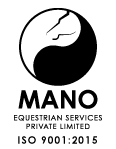Scour-X
Oral Anti-Diarrhoeal Suspension
For the treatment of neomycin or sulphonamide-sensitive bacterial enteritis in calves, horses, dogs and cats.
- coli is a significant cause of diarrhoea in calves 1-4 weeks of age2
- A proven combination for treatment of bacterial diarrhoea
- Neomycin: effective treatment for E. coli infections
- Sulfadiazine + Sulfadimidine: for E. coli and Salmonella bacterial infections
- Vitamin B1 + Vitamin B2: replaces important vitamins depleted by diarrhoea
- Once-a-day dosage treatment
Dairy calves
Escherichia coli [E. coli] is a gram-negative bacterium and a significant cause of bacterial enteritis and diarrhoea in calves. E. coli is highly contagious and is spread from cow to calf and calf to calf.
A Canadian study of colostrum samples from dairy cows indicated 94% cultured bacteria; 47% Gram-negative rods and 44% E. coli. Bacterial contaminated colostrum is, no doubt, an important source for infection of calves. E. coli damages the wall of the intestine and toxins exacerbate the severity of the infection. A survey of dairy cattle in Queensland, reported E. coli in samples from 16.7% of animals and 4.1% from environmental samples from the same farms. Calves 1-4 weeks of age are susceptible to E. coli on dairy farms.
Salmonella is frequently cultured from calves with bacterial enteritis. It is sensitive to Neomycin orally. An Australian antibiotic resistance monitoring survey of bovines reported levels of resistance to Neomycin as 5% to Streptomycin 25% and Tetracyclines 39%4. Cryptosporidium parvum is associated with calf scours; sulfadimidine may be useful for treatment of infections.
Dairy heifer calves are the genetic future of a dairy herd. Bacterial enteritis and diarrhoea can be life-threatening and must be treated immediately symptoms are observed.
Beef calves
From a survey of 147 beef cattle producers in Southern NSW; 76 producers indicated that in beef calves up to 14 days of age the incidence of scours was 51.7%, morbidity 4.5% and mortality 5%.
PRODUCT INFORMATION
ACTIVE CONSTITUENTS:
Each 30 mL contains: 1278 mg
SULFADIAZINE 852 mg
SULFADIMIDINE 54 mg
NEOMYCIN SULPHATE 0.91 mg
HYOSCINE (methobromide) 4.5 mg
THIAMINE HYDROCHLORIDE (Vitamin B1) 6.6 mg
RIBOFLAVINE (Vitamin B2) 213 mg
PECTIN 3.1 g
KAOLIN (light)
DIRECTIONS FOR USE SHAKE WELL BEFORE USE DOSE:
Calves, Horses: 30 mL per 25 kg bodyweight orally, daily for 3-5 days. Dogs and Cats: 2 mL per 3 kg bodyweight orally, daily for 3-5 days. Repeat treatment daily until two days after symptoms have subsided – except in cases of salmonellosis where treatment should continue for a minimum of five consecutive days.
WITHHOLDING PERIOD MEAT:
DO NOT USE less than 14 days (Calves) or 28 days (Horses) before slaughter for human consumption.
DISPOSAL
Dispose of container by wrapping in paper and putting in garbage.
STORAGE
Store below 30°C (room temperature). To prevent caking of suspension invert pack regularly. Shake well before use.
